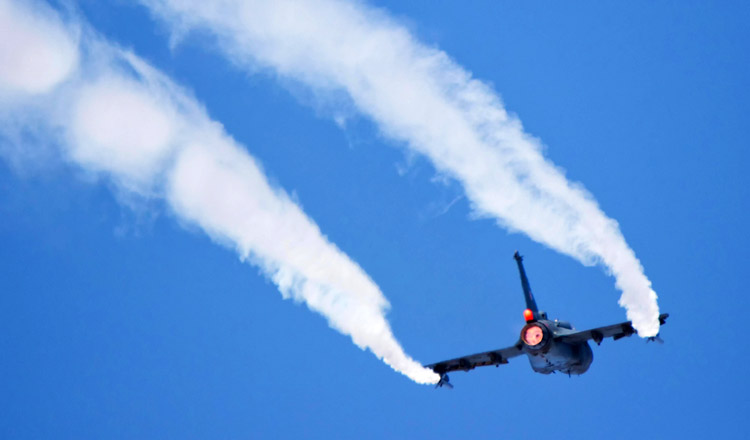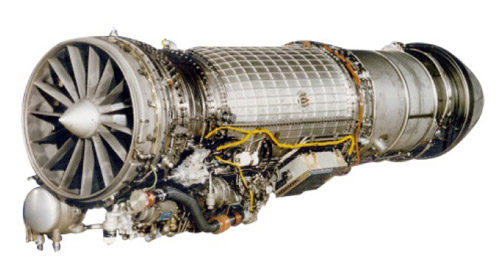INDIAN ARMED FORCES CHIEFS ON OUR RELENTLESS AND FOCUSED PUBLISHING EFFORTS

The insightful articles, inspiring narrations and analytical perspectives presented by the Editorial Team, establish an alluring connect with the reader. My compliments and best wishes to SP Guide Publications.

"Over the past 60 years, the growth of SP Guide Publications has mirrored the rising stature of Indian Navy. Its well-researched and informative magazines on Defence and Aerospace sector have served to shape an educated opinion of our military personnel, policy makers and the public alike. I wish SP's Publication team continued success, fair winds and following seas in all future endeavour!"

Since, its inception in 1964, SP Guide Publications has consistently demonstrated commitment to high-quality journalism in the aerospace and defence sectors, earning a well-deserved reputation as Asia's largest media house in this domain. I wish SP Guide Publications continued success in its pursuit of excellence.
- Prime Minister Modi Visits Punjab’s Adampur Air Base, Interacts with Airmen after Successful ‘Operation Sindoor’; Stern Message to Pakistan
- The layered Air Defence systems that worked superbly, the key element of Operation Sindoor
- Operation Sindoor | Day 2 DGMOs Briefing
- Operation Sindoor: Resolute yet Restrained
- India's Operation Sindoor Sends a Clear Message to Terror and the World – ‘ZERO TOLERANCE’
- Japan and India set forth a defence cooperation consultancy framework, talks on tank and jet engines
Developments in Aviation Sector
The Indian Government is planning to invest $1.83 billion for development of airport infrastructure along with aviation navigation services by 2026.
 |
The Author is Former Director General of Information Systems and A Special Forces Veteran, Indian Army |

On August 17, 2021, India has signed a $716 million (5,375 crore) deal for powering the indigenous Light Combat Aircraft (LCA) – Tejas with America’s GE Aviation. Under the deal GE Aviation will provide 99 x GE F404 engines to Hindustan Aeronautics Limited (HAL). According to R. Madhavan, Chairman and Managing Director of HAL, “This is largest ever deal and the purchase order placed by HAL for LCA.” The contract involves support services from GE Aviation. Madhavan also said that HAL is working closely with GE Aviation for its support to pursue the export potential of LCA and also to supply spares to the global supply chain of GE F404 engines.
Cris Cyr, Vice President for Business Development and Sales of GE Aviation who joined the contract signing through video conferencing platform, said GE Aviation has a 16-year-long partnership with HAL and is happy to extend the relationship with this new order, adding, “The F404 family of engines has proven itself in operations all over the world and we have committed to deliver all 99 engines and support services by 2029.”
GE Aviation will provide 99 x GE F404 engines to HAL for powering the indigenous Light Combat Aircraft (LCA)
The highest thrust variant of the F404 family, the F404-GE-IN20 incorporates GE’s latest hot section materials and technologies as well as Full Authority Digital Engine Control (FADEC) for reliable power and outstanding operational characteristics. F404 family of engines have logged in more than 14 million engine flight hours, and powered 15 different production and prototype aircraft.
HAL issued a statement saying ‘Tejas’ aircraft is powered by the F404-GE-IN20 engines has been in service since 2004, adding, “Ordering of the engines marks a major milestone in the execution of 83 LCA contract with IAF. The co-operation will be further enhanced with the manufacturing of GE F404 engines in India for the upcoming LCA MkII programme.

Concurrently, there is news that the Defence Research and Development Organisation (DRDO) have developed an ‘Advanced Chaff Technology’ to safeguard fighter aircraft of the Indian Air Force (IAF) against hostile radar threats. The Defence Laboratory Jodhpur developed the Advanced Chaff material and Chaff Cartridge-118/I in collaboration with High Energy Materials Research Laboratory (HEMRL) Pune. Both these establishments are under the DRDO. The development meets qualitative requirements of the IAF.
The survivability of fighter aircraft is critical in the intense electronic environment of modern war, especially with advancements in radar technology. To ensure the survivability of aircraft, Counter Measure Dispensing System (CMDS) is used which provides passive jamming against Infra-Red (IR) and radar threats.
GE F404 family of engines have logged in more than 14 million engine flight hours, and powered 15 different production and prototype aircraft
Chaff is a critical defence technology used to protect fighter aircraft from hostile radar threats since very small quantity of chaff material deployed in the air acts as decoy to deflect enemy missiles. This technology has been given to the industry for production in large quantities to meet the annual requirements of the IAF.
Another development related to the aviation sector is from news reports of August 24, 2021 that Boeing has awarded Mahindra Aerostructures a contract to manufacture inlet outer barrel components and sub-assemblies of the B737 aircraft, and supply them to the Boeing facilities in the US.
An aircraft engine's inlet duct moderates the flow of air before its entry into the compressor.

Mahindra Aerostructures has issued a statement saying that production of the components and sub-assemblies will begin in 2023, and they will be supplied directly to Boeing facilities in the US as per the new contract. Deliveries will ramp-up in synchronisation with Boeing's planned increase in B737 production. Arvind Mehra, Managing Director and CEO of Mahindra Aerostructures says, "Boeing demands the best, and this contract award is a testament to our delivery and quality performance which was sustained even during the pandemic."
Former President Dr A.P.J. Abul Kalam had mentioned in his book ‘Wings of Fire’ that one of the critical technologies India needs to develop is engine technology. We may call the LCA Tejas indigenous but the engine that powers it continues to be imported. Hopefully with various ‘Make in India’ projects we will get to develop our own engine technology in near future. HAL has stated that co-operation with America’s GE Aviation will be further enhanced with the manufacturing of GE F404 engines in India for the upcoming LCA MkII programme. But whether this will involve transfer of technology (ToT) is doubtful. Nevertheless our research and development must focus on aero engines.
Hopefully with various ‘Make in India’ projects we will get to develop our own engine technology in near future
The Indian aviation industry is expected to witness $4.99 billion (35,000 crore) investments over the next four years. The Indian Government is planning to invest $1.83 billion for development of airport infrastructure along with aviation navigation services by 2026. The rise in demand for air travel has necessitated the development of a robust eco-system and supportive government policies.
Finally, with the growth of aviation sector in India, increase in foreign direct investments and more joint ventures under ‘Make in India’, India’s contribution to the global supply chain in the aviation industry is set to increase.





